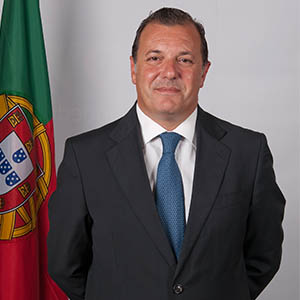Portugal’s economy is booming. Exports are up and unemployment is down. Insufficient capital investment is the last tough nut to crack, and the government is attacking it with gusto—and significant tax reform.


The Portuguese economy is finally in recovery mode, with the recent past a compendium of economic triumphs. Fiscal adjustments produced an overall primary surplus in 2013 for the first time since 1997, while the country’s central bank projects GDP growth of 1.7% for 2015, and 2% for 2016. Private consumption has stabilized and public consumption has declined. Competitiveness is on the upswing.
Portugal now ranks 36th in the World Economic Forum Competitiveness report for 2014/2015, having jumped 15 spots, a trend echoed by another survey published by Institute for Management & Development and the World Bank, where the nation ranked 25th.
“The reality is that our economic outlook is even more favorable” than it seems on paper, says Leonardo Mathias, secretary of state of Economy, citing falling unemployment and rising exports. Exports have also diversified, targeting non-EU countries with a tech focus.
If there’s one concern amidst the many positives brightening the macroeconomic picture, it’s capital investment, says Mathias. The government, he adds, is seeking to encourage foreign direct investment with a host of tactics.
TAX REFORM AND INCENTIVES
Tax reform is one such tactic, and its impact can’t be underestimated, says Mathias. Reforms started in 2014. The top corporate tax bracket has been lowered to 21% from 31.5% in 2013 and is on track for a further reduction to 17% by 2018. Other tax overhauls include a simplification of the system for smaller businesses, an exemption for shareholders owning over 5% of a company, and an automatic tax credit of 20% for investment in the tradable sector.

“The government wants to phase out some extraordinary taxes or levies created because of austerity requirements,” says Carlos Jesus, an equity researcher at Caixa Banco de Investimento. Examples include levies on energy and utility companies and surtaxes on personal rates. “The plan is to take advantage of the growing economy, but not to eliminate [the levies] all at once, which would impact the budget,” he explains.
The government is offering tax credits for investments of up to 25%, particularly focused on investments that maintain or create jobs, and has eliminated corporate tax for start-ups. Several other measures have been implemented, intended to foster foreign investment. A participation exemption regime has been expanded to cover dividends paid by Portuguese subsidiaries to nonresident parent companies located worldwide, tax havens excluded. In addition, capital gains obtained from the disposal of their shares are fully exempt, provided a 5% shareholding is held for at least 24 months.
Rui Constantino, chief economist at Santander Totta, says, “A special regime with lower tax rates is attracting retirees and impacting some premium segments of the residential market in the Algarve and Lisbon regions.”
“Clearly, we are defining our priority to support productive investment and R&D investment,” Mathias notes. Instruments have been simplified and reinforced, to include 26 billion euro package negotiated with the European Union, and other incentives like internships, job creation programs, a “non-habitual” regime for those who want to become residents, and flat rates for qualified expatriates.
Competitive grants benefit companies investing in Portugal by offering higher tax credits for technological innovation and environmental protection.
LABOR SKILLS
In efforts to attract more global FDI, Portugal has focused on developing its workforce, branching away from traditional industries toward higher-value-added technology and new economy businesses.
“The country is already a home for significant projects in areas like telecommunications and networks for car infotainment services,” says Constantino. Such investments have been implemented in collaboration with local universities, like Aveiro and Braga, contributing to the formation of clusters. “Despite their smaller scale, compared to the automotive industry, these have led to the generation of higher added value,” Constantino observes.
Start-ups from university incubators have captured recent headlines. “The interaction between academia and business was not as close a few years ago, but now universities are even beginning to offer programs for entrepreneurship,” Jesus adds.
Federico Mennella describes the quality of today’s labor force from firsthand experience as a board member of leading Portuguese chemical company Hovione. Mennella, managing director of midmarket adviser Lincoln International, is one of the privately owned global firm’s three nonfamily board members. He extols the “quality of Portuguese engineers, who can perform scientific, value-added work at a lower overall cost than those in other countries, like Ireland.” He cites Portugal’s long-standing historical ties with Britain, which have resulted in excellent linguistic skills. English is the official language of Hovione’s 1,200 worldwide employees.
Industry diversification has bolstered the recovery of the external trade balance. Export growth has surged ahead in traditional sectors like pulp and paper, fuels, vegetable oils and organic chemicals, pharmaceuticals, plastics, rubber, metal and manufacturing. As the economy evolves from its traditional industrial base, the past 30 years have transformed traditional industries such as footwear. “The average price of shoes made in Portugal, in terms of sales abroad, is the second-highest in the world, behind Italy. That success reflects both quality of materials and design and labor skills,” says Jesus.
GFmag.com Data Summary: Portugal
Central Bank: Bank of Portugal |
|||
|---|---|---|---|
|
International Reserves |
$20.235 billion |
||
|
Gross Domestic Product (GDP) |
$230.012 billion |
||
|
Real GDP Growth |
2012 |
2013 |
2014 |
|
GDP Per Capita—Current Prices |
$22,130.49 |
||
|
GDP—Composition By Sector* |
agriculture: |
industry: |
services: |
|
Inflation |
20122.8% |
20130.4% |
2014-0.158% |
|
Public Debt (general government |
2012125.8% |
2013129.7% |
2014*130.2% |
|
Government Bond Ratings |
Standard & Poor’s |
Moody’s |
Moody’s Outlook |
|
FDI Inflows |
2011 |
2012 |
2013 |
* Estimates
Source: GFMag.com Country Economic Reports
A WIDER EXPORT MAP

Brazil and Angola, as Portuguese-speaking nations, have long been Portugal’s trading partners. However, with oil prices declining, both economies are wrestling with reduced GDP, and Portugal is casting its net farther afield. “The government has worked very hard to attract investment from several other countries, from a wide range of geographies, such as the United States, Mexico, Colombia, Dubai, Japan and Mozambique,” says Mathias.
China, for instance, has invested in electricity production and infrastructure, insurance and investment banking. In 2014, Chinese FDI, which amounted to roughly $1.8 billion, placed Portugal as its fourth European Union destination, after the UK, Italy and Holland. “But it would be first, if you compare the wealth of the countries involved!” Mathias says.
Three sizable Chinese transactions have totaled €3 billion. In 2011, China Three Gorges bought 21% of Portugal’s largest company, EDP, and in 2012, State Grid of China acquired 25% of RFEN, Portugal’s national power grid. Most recently, in 2014, the Chinese conglomerate Fosun International purchased the insurance operations of Portugal’s largest financial institution, state-owned Caixa Geral de Depositos.
Portugal is also extremely well positioned as a gateway to the rest of Europe. The current expansion of the Panama Canal will provide expanded access to Portugal’s deep-water seaport in Sines and other harbors. The ongoing privatization of TAP Portugal, the country’s air carrier, “has two Brazilian contenders, so we are hoping for more Brazilian FDI,” says Mathias.
In conjunction with initiatives aimed at encouraging investment, Portugal has enacted extensive reforms throughout the labor market, judiciary, transport, telecommunications, financial and product regulation, health, energy and public administration sectors. In all, 450 policy measures have been adopted over the past three years, with further reforms slated for 2015.
The political system has proved helpful, thanks to limited polarization among the major parties, says Antonio Barroso, senior vice president at Teneo Intelligence: “The opposition party abstained in numerous votes directed to implementing measures of restructuring, with the result that the current administration now owns the program.”
THE LEGAL SYSTEM REMAINS A CHALLENGE

A recent IMF survey indicates that exporting firms want further reforms of civil and commercial courts. After several high-profile corruption cases, including the arrest of former prime minister José Sócrates and the collapse of Banco Espírito Santo, “trust in the political system is low,” says Barroso.
Don’t expect much legislative action in coming months, ahead of national elections in October. But after the dust settles, a push for continued restructuring should resume, maintaining momentum to make Portugal an ever-more-appealing destination for capital investment.



